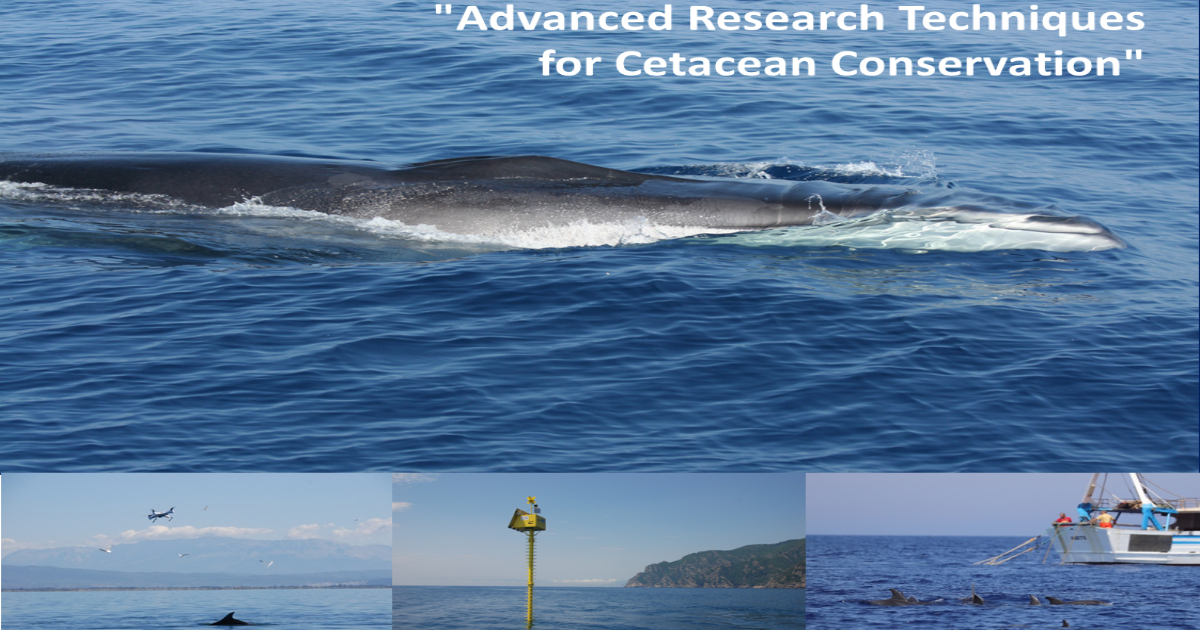Advanced Research Techniques for Cetacean Conservation
A special issue of Journal of Marine Science and Engineering (ISSN 2077-1312). This special issue belongs to the section "Marine Biology".
Deadline for manuscript submissions: closed (5 July 2023) | Viewed by 43819

Image courtesy of Jessica Alessi - Me.Ri.S.: images 1 and 4. Davide Pedrotti - CERT UniPD: images 2. Mauro G. Taiuti - DiFi UniGE
Special Issue Editors
Interests: marine ecology; zoology; marine biology; cetacean; conservation biology; marine environment management
Special Issues, Collections and Topics in MDPI journals
2. MeRiS—Mediterraneo Ricerca e Sviluppo APS, 92026 Favara, Italy
Interests: environmental endocrinology; environmental pollution; endocrine disruption in marine species; fish physiology and reproduction; marine aquaculture; marine mammals; anthropogenic threats to wild cetacean welfare
Special Issues, Collections and Topics in MDPI journals
Special Issue Information
Dear Colleagues,
The protection of cetaceans has attracted increasing attention since their important ecological role was understood and environmental policies focused on finding solutions to protect the sea and counteract climate change.
Cetaceans are ecosystem engineers able to modify habitats increasing species richness and marine productivity. They are sentinels of the marine environment and crucial organisms which maintain the healthiness of the environment in which they are living. Furthermore, whales are able to contrast climate changes by increasing ocean productivity and accumulating carbon in their bodies. Cetacean populations are exposed worldwide to numerous contemporary anthropic threats, including by-catch, ship strikes, habitat degradation, changing environments under climate change effects, and acoustic and chemical pollution.
The purpose of the invited Special Issue is to publish the most recent research focused on the application of innovative approaches for the conservation of cetaceans.
High-quality papers describing novel approaches, methodologies, and technologies for cetacean conservation and effective management are encouraged for publication.
Dr. Jessica Alessi
Dr. Alberta Mandich
Guest Editors
Manuscript Submission Information
Manuscripts should be submitted online at www.mdpi.com by registering and logging in to this website. Once you are registered, click here to go to the submission form. Manuscripts can be submitted until the deadline. All submissions that pass pre-check are peer-reviewed. Accepted papers will be published continuously in the journal (as soon as accepted) and will be listed together on the special issue website. Research articles, review articles as well as short communications are invited. For planned papers, a title and short abstract (about 250 words) can be sent to the Editorial Office for assessment.
Submitted manuscripts should not have been published previously, nor be under consideration for publication elsewhere (except conference proceedings papers). All manuscripts are thoroughly refereed through a single-blind peer-review process. A guide for authors and other relevant information for submission of manuscripts is available on the Instructions for Authors page. Journal of Marine Science and Engineering is an international peer-reviewed open access semimonthly journal published by MDPI.
Please visit the Instructions for Authors page before submitting a manuscript. The Article Processing Charge (APC) for publication in this open access journal is 2600 CHF (Swiss Francs). Submitted papers should be well formatted and use good English. Authors may use MDPI's English editing service prior to publication or during author revisions.
Keywords
- Cetaceans
- Conservation
- Monitoring
- Management
- Anthropic impact
- Marine mammals
- Techniques
Benefits of Publishing in a Special Issue
- Ease of navigation: Grouping papers by topic helps scholars navigate broad scope journals more efficiently.
- Greater discoverability: Special Issues support the reach and impact of scientific research. Articles in Special Issues are more discoverable and cited more frequently.
- Expansion of research network: Special Issues facilitate connections among authors, fostering scientific collaborations.
- External promotion: Articles in Special Issues are often promoted through the journal's social media, increasing their visibility.
- Reprint: MDPI Books provides the opportunity to republish successful Special Issues in book format, both online and in print.
Further information on MDPI's Special Issue policies can be found here.






